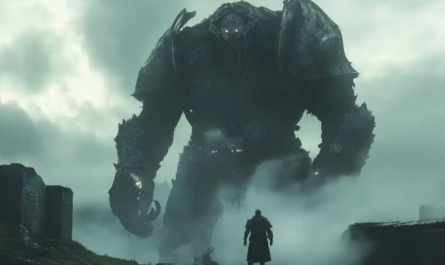YouTube is rolling out a major policy update that will make its platform more restrictive toward violent gaming videos and gambling-related content. The new rules, taking effect on November 17, are designed to protect younger viewers from graphic or harmful material while encouraging creators to post responsibly.
According to YouTube, the changes will age-restrict certain videos that contain graphic scenes of violence in video games, especially those showing realistic human characters in situations like torture or mass violence against non-combatants. This means users under 18 and those who are not signed in will no longer be able to view such content.
How YouTube Will Decide Which Videos Get Restricted
YouTube says its moderation team will look at several factors before deciding whether a video needs an age restriction. The platform will review:
-
The duration of the violent scene — longer and more detailed scenes are more likely to be restricted.
-
The focus of the camera — whether the violence is zoomed in or highlighted as the main point of the video.
-
The realism of the characters — particularly when they look or move like real humans.
This means that games known for realistic violence could be affected, though YouTube hasn’t named specific titles. Popular franchises such as Grand Theft Auto, Call of Duty, or The Last of Us might face restrictions depending on how creators present their gameplay footage.
YouTube’s Clarification and Creator Options
A YouTube spokesperson, Boot Bullwinkle, told The Verge that the platform won’t automatically restrict every violent game video. The focus will be on scenes that are “non-fleeting or zoomed in.”
He explained, “Certain content may be age-restricted if it’s non-fleeting or zoomed in, but there are ways creators can choose to play or edit missions to avoid an age restriction.”
Creators can take several steps to keep their videos accessible:
-
Skip missions with extreme violence.
-
Blur or obscure violent scenes.
-
Avoid focusing on torture or attacks against civilians.
These options give creators flexibility while maintaining compliance with YouTube’s updated standards.
How the New Policy Expands Existing Rules
This isn’t the first time YouTube has restricted violent content. Its current rules already limit videos that feature dramatized or real-world violence, especially those showing torture, serious injuries, or bloody deaths. However, gaming videos have often been treated differently because the violence is fictional or animated.
Previously, YouTube’s policy stated:
“Generally, we do not remove dramatized violence when the content or metadata lets us know that the content is fictional, or when it’s apparent from the content itself, such as with animated content or video games.”
But as gaming graphics continue to become more lifelike, the line between fiction and realism has blurred. Many modern games now use cinematic visuals and human-like characters, making violent scenes feel disturbingly real. YouTube’s updated approach acknowledges this evolution, adjusting its rules to better protect younger audiences.
Impact on Gaming Creators
For gaming creators, the update brings new challenges and responsibilities. Videos that are age-restricted will:
-
Be unavailable to viewers under 18 or anyone not signed in.
-
Lose personalized ad placements, affecting monetization.
-
Have limited visibility in YouTube’s recommendations and search results.
This could reduce traffic and revenue for creators who focus on violent or mature games. However, YouTube’s guidelines also give creators options to adapt. Editing videos to minimize graphic moments, blurring violent scenes, or adding disclaimers can help avoid age restrictions while keeping the content engaging.
In the long run, creators who adjust quickly and learn to balance realism with responsibility are likely to maintain healthy audience growth.
Stricter Gambling Content Rules
Alongside changes to gaming content, YouTube is also tightening restrictions on gambling-related videos. The update will prohibit creators from directing viewers to online gambling services involving digital goods, such as video game skins, NFTs, or cosmetic items.
This update builds on policies introduced earlier in March 2025, when YouTube banned creators from promoting or displaying unapproved online gambling platforms. The company also began blocking approved gambling content for users under 18 at that time.
Now, YouTube plans to age-restrict “social casino” content, including:
-
Simulated slot machines.
-
Virtual betting systems.
-
Games that mimic real gambling using digital currencies or items.
These changes are a response to growing concern about the influence of gambling mechanics in video games, which many experts say can encourage addictive behavior among younger players.
Why These Changes Are Important
YouTube’s decision reflects a broader industry trend toward responsible digital content management. As gaming and online entertainment become increasingly immersive, platforms must take more proactive steps to protect younger audiences without stifling creativity.
For creators, understanding these new rules is crucial. Those who fail to adapt may see reduced visibility or monetization, while those who comply can continue to grow sustainably within YouTube’s guidelines.
For viewers and parents, the update provides assurance that the platform is taking youth safety seriously—limiting access to material that could be disturbing or inappropriate for minors.
What to Expect Moving Forward
Starting November 17, YouTube’s algorithm and moderation teams will begin enforcing these new restrictions. Users under 18 will encounter more age-gated screens, requiring them to sign in or verify their age to access certain videos.
Gaming channels covering titles with mature or violent themes will likely see the biggest impact. However, YouTube’s transparent communication and editing options suggest the company aims for balance—protecting younger users without punishing responsible creators.
Over time, this move could encourage more thoughtful, creative approaches to gaming content. By editing or framing gameplay in new ways, creators can continue showcasing their favorite titles while staying within YouTube’s evolving policies.
Conclusion
YouTube’s latest policy update marks an important step in building a safer and more responsible platform. Starting November 17, the company will age-restrict gaming videos with realistic violence and expand its rules to include gambling-related digital content.
While these changes may challenge some creators, they represent a necessary evolution in the digital landscape. As gaming becomes more lifelike and immersive, YouTube’s approach ensures that younger audiences are shielded from inappropriate material—while creators still have room to share, entertain, and innovate responsibly.




